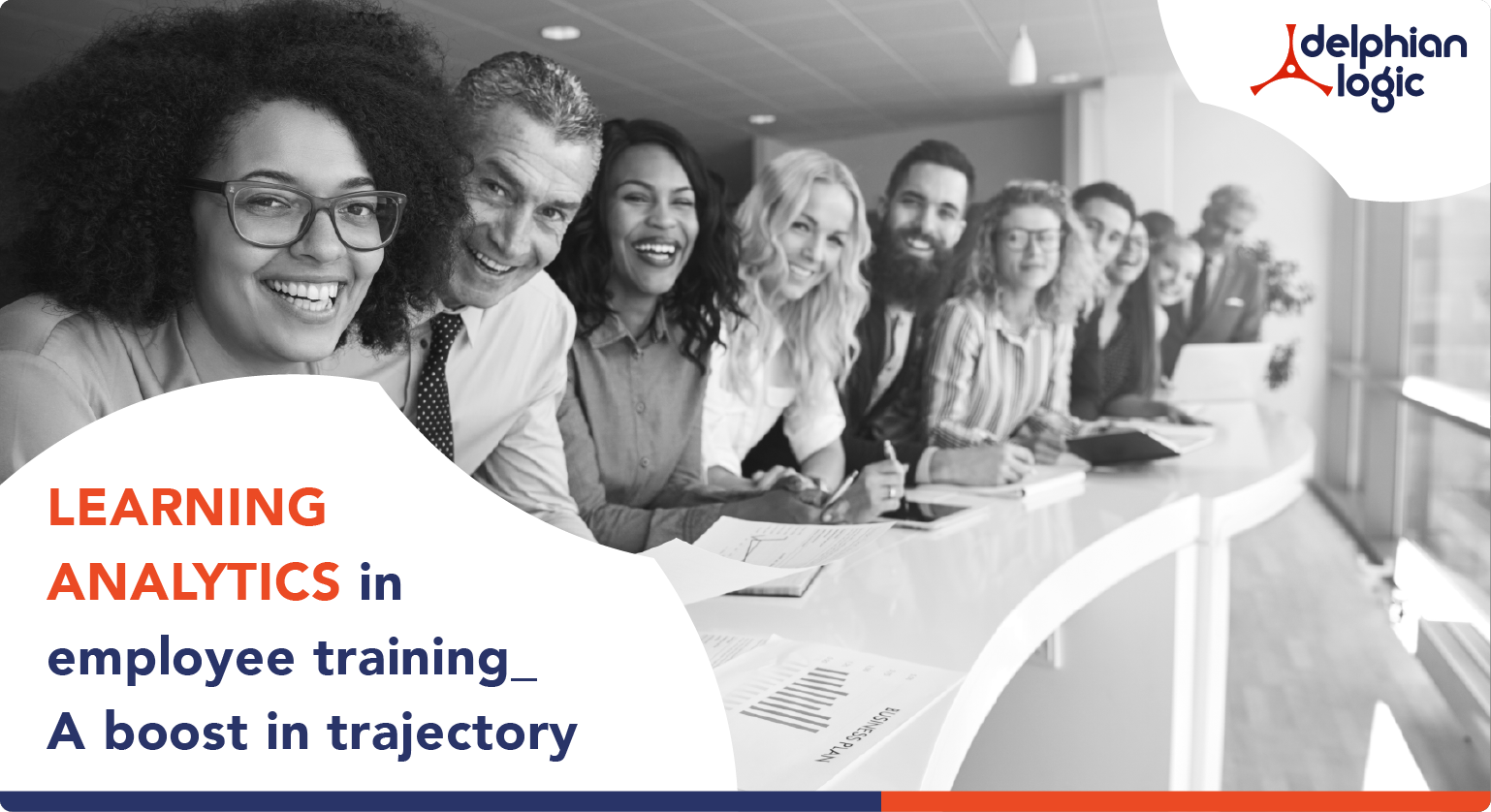June 25, 2019
Learning analytics in employee training: A boost in trajectory

Employee learning/training courses are key determinants of the future trajectory that a given company’s business will take. In the highly volatile, and competitive business environment of today, employee learning has become more of a strategic component, than a mere knowledge conduit. Most Learning Management Systems today host several learning content modules catering to various aspects of the business. These pieces are built using different technologies, instructional methodologies and with different content relevance. The overall investment in employee training by companies, has steadily increased over the past years.
This change has however, also resulted in significantly higher standards of expectation that companies have from their employee training course/s. Employee learning is expected to bring about greater workforce engagement in the shortest possible time frame, with the end result being complementary to the overall ROI. In order to achieve this, training administrators are required to collect and store large volumes of highly detailed information, pertaining to various training aspects. This task in itself however, can be quite time consuming, not to mention tedious for training operators.
Enter Learning Analytics; dedicated software solutions that automate advanced data gathering analysis, thereby allowing training operators to generate more actionable data. The purpose of learning analytics is two-pronged:
- Highly objective analysis of various aspects of learning modules, thereby creating scope for changes/tweaks, or improvements.
- Direct pointers to the ROI impact of the training, on the business itself.
Here are 5 ways in which learning analytics help improve learning in the workplace:
-
Predict learner performance
The data gathered through learning analytics functions can be used by training operators in a predictive capacity, on an individual learner basis. These advanced insights prove useful for organizations to keep tabs not only on the current performance of employees, but also on their [statistically likely] future progress. In this way, learning administrators can take vital action that ensures maximum benefit for each employee involved in the training course/s.
-
More ‘compliant’ training scenario
For most companies, compliance is an integral component of employee training scenarios. Herein, training operators are required to meticulously collect, and record individual employee data pertaining to basic training aspects such as learner attendance, time spent on module/s, certifications, etc. Learning analytics solutions streamline this entire process through automation, thereby boosting efficiency, as well as scope for overall content refinement. Furthermore, this also serves as a direct point of reference for business heads to gauge ROI impact of the learning programs.
-
Personal attention for all
Training is a technical necessity for any organization to nurture skilled, as well as loyal employees. When it comes to employees however, the learning process itself is more of a personal journey, rather than a technical endeavor. No matter how good the content, it will not produce the desired impact unless it is effective for the individual. This is where the automation capabilities of learning analytics come in. As a result of the depth, and rapidity of the information generated, learning administrators are able to identify trends in learning behavior and develop learning paths that align with common learning behavioral trends.
-
Save on unnecessary costs
The advanced data generation capabilities of learning analytics provide insight into the working of a company’s employee training programs. This involves a multitude of quantifiable data, condensed into actionable pointers for the training administrators, as well as the organization. Using this data, business heads are able to work more closely with learning administrators in identifying the effectiveness of training on a modular basis; consequently help them take more informed decisions regarding budget allocations.
For instance, if one particular module seems to be ineffective for most learners over a period of time, then the necessary resources can be allocated to either fixing the issue (based on closer inspection), or focusing on a more efficient workaround. That way, the long-term cost effectiveness of the learning programs can be enhanced, and learning organizations made more efficient.
-
For a brighter tomorrow
Employee training is something if a constant endeavor on part of organizations that administer them. New employees are inducted on a yearly basis (at least), all of whom must undergo the necessary learning course/s that enables them to become cohesive entities within the company. It is therefore imperative that learning programs are subjected to timely evaluations, based on which the necessary improvements can be made. Learning analytics solutions provide companies with detailed insight regarding the existing (employee) usage trends that can then help them in creating more engaging experiences for future learners.



